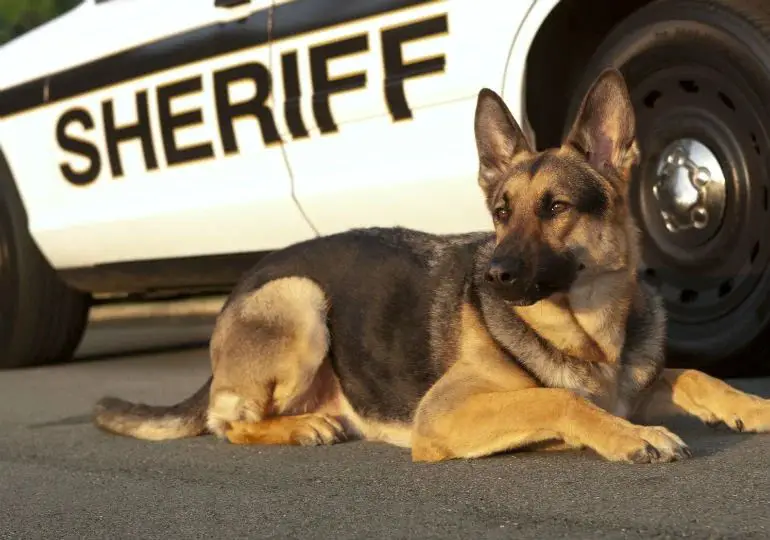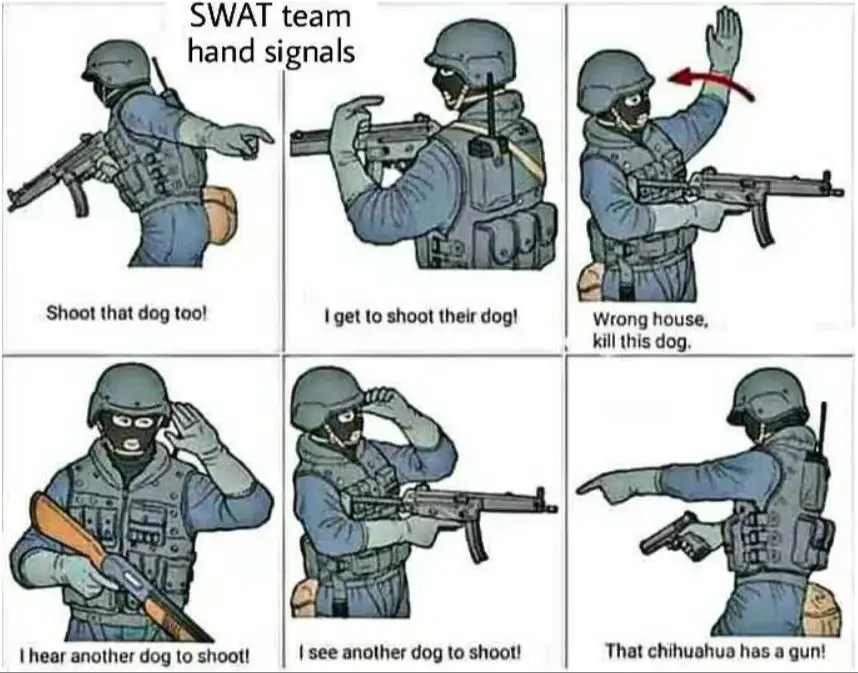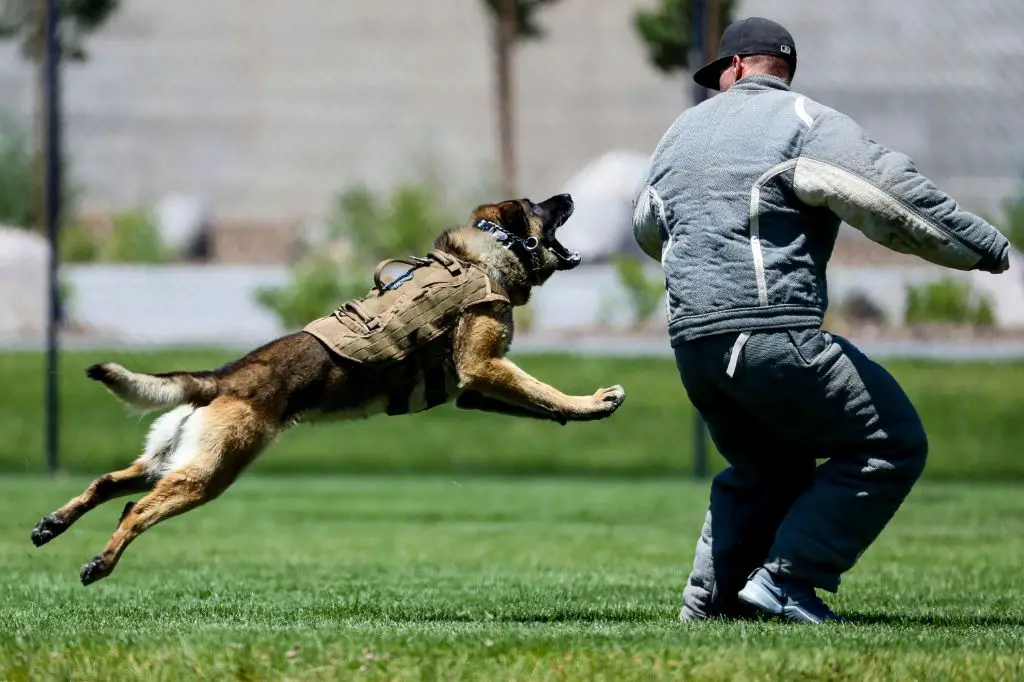Introduction
Police dogs, also known as K-9s, go through extensive specialized training in order to aid law enforcement with their duties. This training is a crucial investment for police departments, as it transforms dogs into highly valuable tools for specific operations such as searching, tracking, drug and explosives detection, and suspect apprehension. Police dogs can utilize their powerful sense of smell and hearing to locate missing persons, hidden contraband, and hidden suspects in a way that humans officers cannot. However, this is only possible because of the intensive, tailored training the dogs receive to hone these natural abilities.
Police dog training starts when the dogs are still young and impressionable puppies. Trainers look for specific high-drive breeds like German Shepherds and Belgian Malinois that have both the physicality and temperament for police work. The dogs live and train full-time with their assigned human police handler to build a close bond. This training focuses on basic to advanced obedience, scent detection work, search patterns, and simulated real-world police scenarios. Police dogs typically train for up to two years before they are ready to join their handler in active police duty. Their training and certifications must also be maintained through ongoing practice and assessments. When trained properly, police dogs become active members of a police force and provide capabilities no human officer can match.
Breeds Used
Police forces utilize working dogs that have specific attributes and abilities to help with unique police work. While many breeds can be trained for police service, the most common breeds seen working in law enforcement are German Shepherds, Belgian Malinois, and Bloodhounds.

German Shepherds are one of the most widely used breeds due to their confidence, courage, keen sense of smell, trainability, and ability to listen to commands [1]. They have a combination of intelligence, work ethic, and athleticism that makes them well-suited for the demands of police work.
Belgian Malinois are increasingly being chosen by police organizations. They have great agility, energy, and an intense drive to work. Their herding background gives them strong protective instincts and the ability to make quick decisions [2]. The Malinois is robust and can endure repetitive tasks.
Bloodhounds are valued for their olfactory ability and tracking skills. Their ability to detect and follow a scent trail is nearly unmatched in the canine world. Bloodhounds are used to track missing persons, escaped prisoners, or suspected criminals [1].
While some forces deploy Rottweilers, Doberman Pinschers, Boxers, and Labrador Retrievers, the herding and sporting breeds above are most prevalent [2].
[1] https://www.wvnstv.com/news/local-news/what-are-the-top-10-police-dog-breeds/
[2] https://www.nylabone.com/dog101/amazing-police-dog-breeds
Obedience Training
Obedience training is the foundation of police dog preparation, teaching them to follow verbal commands and hand signals (How Stuff Works). Dogs must learn basic obedience first, responding immediately to commands like “sit,” “stay,” “come,” and “heel” from their handler. This establishes the handler’s role as pack leader and ensures the dog will follow directions in any situation.

Obedience establishes control, focus, and respect. As the foundation of success, it must be precise and consistent (Police1). Proper timing, balance of rewards and corrections, and short positive training sessions make learning fun and effective. Dogs are motivated by toys, food, and praise. Obedience training continues throughout a working dog’s life to maintain top performance.
Tracking Skills
Police dogs undergo extensive tracking training to be able to follow scents and locate missing persons or suspects. Typically, trainers start by laying short scent tracks and having the dog follow them to find a toy or food reward. The tracks gradually increase in length, age, difficulty and distractions as the dog masters each stage.
![]()
Tracking is based on a dog’s strong sense of smell and ability to detect microscopic particles a human leaves behind when walking. The dogs are trained to find and follow “scent pools” left by footprints and crushed vegetation. Weather conditions like rain or high heat can make tracking more difficult.
In addition to ground tracking, some police dogs are trained in air scenting to locate a person’s scent carried by air currents. This allows them to track over large wilderness areas where a trail may not be obvious. The most capable police dogs can follow tracks that are over a day old across all kinds of terrain.
According to training facilities like Leerburg, police tracking dogs achieve high accuracy by being trained through “drive” instead of traditional obedience methods. This high-motivation style builds the dog’s focus and determination to follow a scent to its source.
Drug and Explosives Detection
K9s undergo specialized training to detect illicit drugs and dangerous explosives. Trainers use real samples of drugs and explosives to condition the dogs to recognize different scents. According to tacticalpolicek9training.com, drug detection training begins with imprinting the dog’s nose on the target odors using a reward-based system.
Trainers hide drug samples in various environments and reward the dog when it correctly signals an alert. Over time, the dogs learn to generalize the scents and can detect drugs despite packaging or concealment. For explosives, dogs are trained to detect components like nitroglycerin, nitrocellulose, and ammonium nitrate. Their sensitive noses can pick up traces of explosives on objects, vehicles, luggage and more. Trainers use aids like PVC pipes with hidden samples to simulate real-world detection scenarios.
According to federal guidelines, dogs must demonstrate a 90% accuracy rate before certification. Rigorous training and ongoing practice enables K9s to play a vital role in drug and bomb detection for law enforcement and security operations. Their exceptional scenting abilities make them an invaluable asset.
Attack and Apprehension
Police dogs must be trained to chase down and apprehend dangerous suspects when commanded. This is known as bite work training. It involves teaching the dog to chase, hold, and restrain a human target wearing a special bite suit. The dogs are initially trained using equipment like bite pillows and sleeves to get them comfortable with biting down and not releasing.

Once the dog is ready, trainers will begin simulating real-world scenarios. They may act out a struggle or fight to see if the dog will stay focused on the target. The dogs are rewarded with toys and praise for holding and refusing to let go of the protected arm. This teaches them not to be distracted or scared away from completing the apprehension.
Bite work is a controversial aspect of police dog training due to the inherent danger of dogs biting people. However, it remains an important skill for situations where a violent suspect needs to be stopped or subdued with minimal injuries. The dogs can help deescalate dangerous arrests through intimidation and physical control if commanded to by their handler. With proper training, the risk of excessive force is reduced.
Non-Violent Tactics
Police dogs are trained to use non-violent tactics to apprehend suspects without causing injury. While police dogs are capable of inflicting harm if commanded, most police departments avoid teaching dogs to bite or attack except as an absolute last resort.
One common non-violent tactic is called “find and bark.” In this method, police dogs are trained to chase down a suspect and hold them by barking at them without making physical contact. The barking alerts the dog’s handler where the suspect is and acts as a deterrent for the suspect to surrender peacefully.
Another non-violent tactic is “circle and bark.” With this technique, the police dog is taught to circle around the located suspect while barking. This contains the suspect in one area while allowing the police officers time to arrive on the scene and make an arrest. These methods aim to apprehend non-compliant or dangerous suspects through intimidation without actual violence.
According to a police dog training guide, non-compulsive training methods that rely on positive reinforcement produce dogs that want to assist police officers with apprehending suspects, rather than dogs that work solely to avoid punishment. With patience and persistence, police dogs can learn to be highly effective at their duties without ever needing to inflict harm.
Real-World Simulation
Police dogs participate in lifelike training simulations that provide realistic scenarios they may encounter on the job. Specialized mannequins like the Advanced Canine Medical Trainer (K9 Diesel) allow handlers to simulate providing emergency care to an injured police dog. Other simulations involve replica buildings and environments where dogs can practice searching, tracking, and apprehending suspects. According to K9 simulation training courses, these simulations prepare dogs for high-stress situations while preventing real-life injuries that can occur during training. The more realistic the simulation, the better prepared the K9 teams are for challenging field work.
The Training Language
Police dogs in the United States are often trained using commands in German. This is because many police dog breeds, such as German Shepherds and Belgian Malinois, originate from Germany and Europe where German is widely spoken. The tradition of using German commands for police dogs began because the dogs were imported from Europe already trained in that language [1].
However, police dogs can understand and respond to commands in any language. The most important factor is that the handler uses short, clear commands in a consistent training language [2]. This allows the dog to easily recognize and obey the commands. The handler’s fluency and familiarity with the chosen language also helps in effective training and performance.
So while German or other European languages are commonly used, police dogs are ultimately trained in the native language of their handler or trainer. The handler chooses commands that the dog can easily distinguish and remember. With proper training, police dogs will reliably respond to commands in any language their handler speaks fluently.
Continuous Training
Police dogs require ongoing training throughout their careers to maintain their skills and prepare for new scenarios (Police K9 Training). Even after graduating from initial training academies, police dogs and their handlers need to continue honing skills through regular practice. This ensures the dogs’ obedience, tracking, detection, and apprehension abilities do not deteriorate.
Continuous training sessions keep police dogs mentally stimulated and engaged. Their handler will set up search scenarios or detection exercises on a regular basis to maintain the dog’s proficiency. More time may be spent on weaknesses or developing new capabilities. The training reinforces the strong rapport between handler and dog.
Throughout their careers, police dogs undergo evaluations on their performance in realistic situations. This testing process helps identify any weak points in their training so those skills can be further strengthened. Annual re-certifications are common to confirm the police dogs are up to standards for active duty (K9 dog training: How police dogs are trained for duty). With ongoing quality training, police dogs remain highly capable officers.
